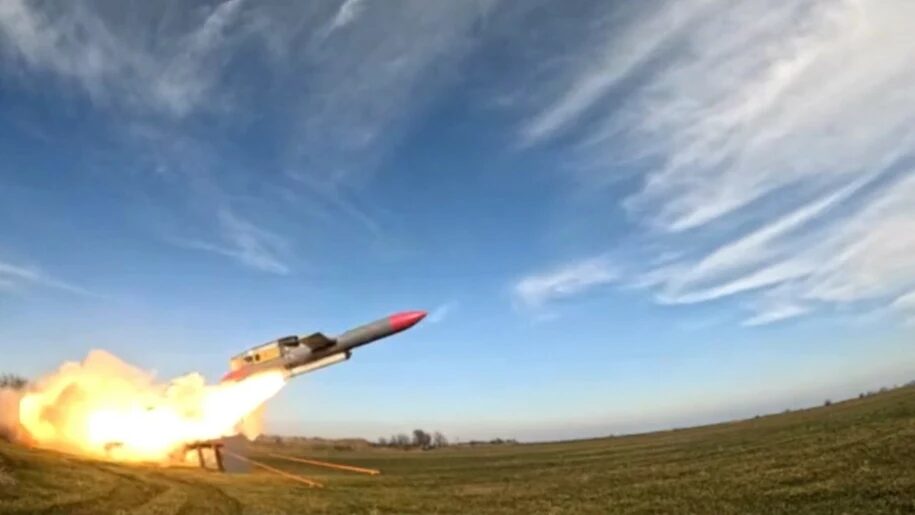Ukraine’s Flamingo Missiles Strike FSB in Crimea – New Long-Range Weapon

The headquarters of the Russian Federal Security Service (FSB) in Armyansk, Crimea, was struck by newly developed long-range cruise missiles FP-5 Flamingo, a weapon secretly advanced by Kyiv in recent months. The attack took place at dawn on 30 August, with footage showing the launch of three missiles directed at Russian positions. Reports confirm that the strike caused severe damage to the FSB facility and also destroyed Russian Mi-8 and Mi-24 helicopters stationed at the Simferopol airfield. Initial speculation suggested the use of Neptune missiles, previously employed to sink the cruiser “Moskva” in 2022, but the latest information points to the deployment of the entirely new Flamingo system. This weapon is designed to target strategic objectives at distances of up to 3,000 kilometers, marking a significant breakthrough in Ukraine’s defense capabilities. Analysts note that the strike may represent a turning point in the war, potentially undermining Russia’s ability to operate logistics and command centers near the front. The incident was first reported by the outlet Militarnyi, and if confirmed, it could become one of the most consequential developments since the beginning of the full-scale invasion, reports G.business citing Militarnyi.
Further details reveal that the Flamingo missiles were developed by the company Fire-Point and currently stand as the most advanced conventional cruise weapons produced by Ukraine’s defense industry. The missile has a range of up to 3,000 kilometers and carries a warhead weighing more than 1,000 kilograms. Its launch mass is around 6 tons, with a wingspan of 6 meters, and it flies at subsonic speed. Equipped with both satellite and inertial navigation systems, Flamingo is often compared to the American Tomahawk or the German Taurus, but it surpasses them in size and destructive payload.
According to official statements, Ukraine is currently producing one Flamingo missile per day. President Volodymyr Zelensky announced that mass production is scheduled to begin at the end of this year or early next year. This industrial ramp-up is expected to further strengthen Kyiv’s capacity to carry out deep-strike operations against Russian military and industrial infrastructure.
Military experts stress that the introduction of Flamingo fundamentally alters the strategic situation. Until now, Russia has been able to position its command centers and logistical hubs relatively close to the frontline with little risk. With Flamingo in Ukraine’s arsenal, Moscow faces the growing threat of long-range strikes capable of hitting high-value targets far behind the frontlines, potentially reshaping the course of the war.
Stay connected for news that works — timely, factual, and free from opinion — and insights that matter now: Zelensky: Trump’s two-week deadline for Russia to prepare for peace talks is expiring





